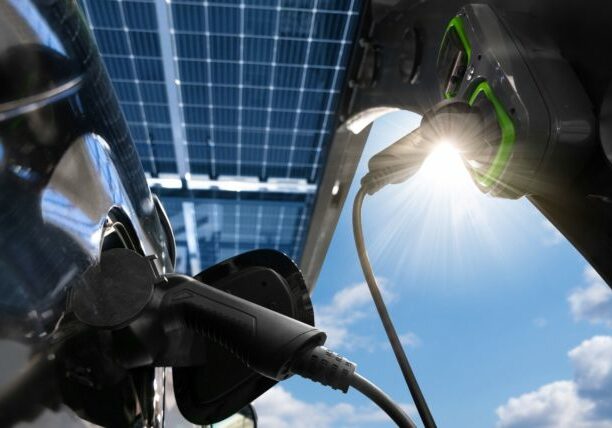November 21, 2019
Energy Storage is Failing to Reach Those Most in Need: Policy Can Help
By Seth Mullendore
Energy storage is quickly approaching an inflection point – shifting from being considered the “next big thing” to becoming a major driving force in the global energy transition. This is excellent news for the storage industry and renewables advocates alike, but, as with too many past energy transitions, the benefits of this new technology revolution are not being equitably distributed. Without policies designed to address existing market failures and historic barriers to equitable participation, low-income communities and communities of color will once again be passed over as utilities, corporations, and high-end adopters reap the benefits of innovative new technologies.
Impressive declines in the cost of battery storage technologies are catalyzing exponential growth in storage deployments as battery installations move from the realm of pilots and demonstration projects into proven, cost-effective energy solutions. Energy storage capacity installed this year is expected to top 600 megawatts, more than double the amount of storage deployments in 2018, and annual deployment numbers are forecast to increase another sevenfold over the next five years. Unfortunately, only a small fraction of these storage installations have been developed to the benefit of underserved populations most in need of the economic and resiliency benefits that storage can provide.
This disparity is being illustrated in real-time as California utilities have begun to regularly shut off power to millions of residents and businesses as a preventative measure to avoid sparking deadly wildfires. While the effort is intended to minimize wildfire-related losses of life and property, the shutoffs themselves are putting the lives of thousands of medically vulnerable individuals in jeopardy as electricity-dependent medical devices become unusable for hours, or even days, without access to grid power during shutoffs.
Those with the means to do so are turning to solar and battery storage as a reliable backup power solution. As a California installer reported to Reuters, “The outages have affected affluent parts of California that can afford solar and battery systems to keep their electric vehicles charged and wine cellars cold.” But the outages are also affecting very poor parts of California, where many people are struggling to afford the cost of a small portable gas generator and fuel to keep it going, much less solar and battery storage systems that cost significantly more upfront but can deliver economic benefits for decades.
A similar scenario unfolded in Puerto Rico after Hurricane Maria. The storm left the majority of the island without reliable power for months. Ten thousand solar systems paired with battery storage were installed in Puerto Rico in the year following Maria – prior to Maria, the region had about 10,000 solar systems installed and almost no energy storage. While philanthropic efforts have brought solar and storage to some community facilities, upfront costs and financing barriers have left most low-income communities unprepared for the next major storm – 40 percent of Puerto Ricans live below the poverty line.
It will take intentional crafting of policy to end these disparities in energy storage deployment. As policymakers in California have learned, simply carving funds for low-income projects out of existing incentive programs designed to accelerate general market trends is not enough to ensure more equitable deployment of resources. Instead of merely accelerating already-economical, first-mover projects and high-end early adopters, it’s time for public policy and incentives to prioritize societal benefits – advancing technological innovations such as energy storage in underserved communities, to lower energy burdens, improve energy resilience, decrease reliance on polluting power plants, create more local jobs, provide workforce development opportunities, and enable wealth creation.
In California’s defense, policymakers there have at least considered equity in storage policy design, albeit only after years of lucrative public incentives flowed to businesses and wealthy households. California has the most robust behind-the-meter (BTM) storage market in the county, largely due to its Self-Generation Incentive Program (SGIP). In 2017, several years after the program began incentivizing storage, California regulators established a 25 percent carveout in SGIP for projects in low-income and environmentally overburdened communities, known as the SGIP Equity Budget.
The policy move was widely heralded as the first significant equity-focused incentive for energy storage in the country. The bad news is that no one used it. Incentives were too low (not adequately accounting for the additional challenges and barriers facing underserved populations), outreach for the program was near nonexistent, the application process was overly burdensome, and it didn’t work well with other energy programs for low-income communities.
California regulators are now attempting to hit restart on the program, with approved higher incentives (in some cases double previous incentive levels), funding for education and community engagement, and a more streamlined approach to combining the SGIP incentives with low-income solar initiatives, along with $100 million in repurposed funding specifically devoted to projects in wildfire-prone areas.
Another example of well-intentioned policy in need of adjusting is Massachusetts’ solar and storage incentive program, Solar Massachusetts Renewable Target (SMART). The program includes adders for solar projects in low-income communities and a separate, stackable adder for projects including energy storage. But despite the adders, only about two percent of SMART program application capacity is attributable to projects serving low-income communities. The SMART program is now undergoing expansion and revision, with one goal being to increase participation from low-income projects. Unfortunately, increasing the low-income adder is not among the proposed remedies.
There’s clearly room for improvement in energy storage policy. Fortunately, a new resource is available to help educate policymakers about the importance of prioritizing equity when designing energy storage policy. The policy brief, How to Ensure Energy Storage Policies Are Equitable, was prepared by Union of Concerned Scientists as a follow-up to the collaborative Principles of Equitable Policy Design for Energy Storage , which was released earlier this year. The brief highlights ways to incorporate equity when drafting new energy storage policies and includes recommendations for legislators and regulators. The recommendations detail key policy considerations, such as:
- designing for specific community-benefiting outcomes, for instance: reduced local emissions or community wealth generation;
- implementing comprehensive and transparent stakeholder engagement processes, targeted outreach, and education to underserved communities along with dedicated support and funding; and
- actively identifying and addressing barriers to participation among low-income and otherwise disadvantaged individuals and communities.
California’s rebooted SGIP Equity Budget and new Equity Resilience Budget aim to implement a number of these recommendations. Of course, policy design and policy implementation are two different things. If outreach and education efforts are delayed or insufficient, SGIP’s higher equity incentives could result in an energy storage goldrush and predatory practices by companies looking to maximize returns, not customer or societal benefits.
Getting policy right is not an easy process. It takes well-informed and resourced advocates and community organizations and a transparent, inclusive process to help ensure success, no matter how well-intentioned those crafting the policies may be.
This blog is also featured on Renewable Energy World online.














